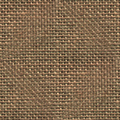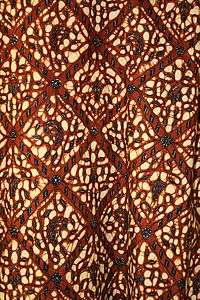Challis (fabric)
Challis, sometimes referred to as challie[1] or chally,[2] is a lightweight woven fabric, originally a silk-and-wool blend, which can also be made from a single fibre, such as cotton, silk or wool,[3] or from man-made fabrics such as rayon.[4] It was first manufactured in Norwich, England, in about 1832, when it was designed as a thin, soft material similar to Norwich crape, but matt-textured rather than glossy, and more pliable.[3][5] It was being exported to Australia in 1833. [6] Challis could be made with woven designs, or printed.[5] 'French challis' has a glossy finish.[3] The designs were often floral, paisley, or geometric,[7] and based on French silk patterns.[3]
The term is derived from an Anglo-Indian word, shallee, which means 'soft'.[7] At least one source suggests the term is American Indian.[8]
References
- ↑ Victorian Fashions and Costumes from Harper's Bazar, 1867-1898, by Stella Blum; published 1974 by Courier Corporation; via Google Books
- ↑ Bulletin of the National Association of Wool Manufacturers, volume 23, page 144; edited by S.N. Dexter North; published 1893; via Google Books
- 1 2 3 4 Dooley, William Henry (1924). Textiles for Commercial, Industrial, and Domestic Arts Schools. Istodia Publishing LLC. pp. 66–67. ISBN 9781449589363.
- ↑ Stauffer, Jeanne (2004). Sewing Smart with Fabric. DRG Wholesale. p. 106. ISBN 9781592170180.
- 1 2 James, John (1857). History of the worsted manufacture in England: from the earliest times; with introductory notices of the manufacture among the ancient nations, and during the middle ages. Longman, Brown, Green, Longmans, and Roberts.
- ↑ http://trove.nla.gov.au/newspaper/article/12846065
- 1 2 Maitra, K. K. (2007). Encyclopaedic Dictionary of Clothing and Textiles. Mittal Publications. p. 72. ISBN 9788183242059.
- ↑ Pizutto, Joseph James; Arthur Price; Allen C. Cohen (1987). Fabric science. Fairchild Publications. p. 352. Retrieved 16 July 2013.


.svg.png)